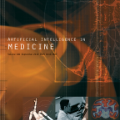Social media platforms have been exploited to disseminate misinformation in recent years. The widespread online misinformation has been shown to affect users' beliefs and is connected to social impact such as polarization. In this work, we focus on misinformation's impact on specific user behavior and aim to understand whether general Twitter users changed their behavior after being exposed to misinformation. We compare the before and after behavior of exposed users to determine whether the frequency of the tweets they posted, or the sentiment of their tweets underwent any significant change. Our results indicate that users overall exhibited statistically significant changes in behavior across some of these metrics. Through language distance analysis, we show that exposed users were already different from baseline users before the exposure. We also study the characteristics of two specific user groups, multi-exposure and extreme change groups, which were potentially highly impacted. Finally, we study if the changes in the behavior of the users after exposure to misinformation tweets vary based on the number of their followers or the number of followers of the tweet authors, and find that their behavioral changes are all similar.
翻译:近些年来,社交媒体平台被利用来传播错误信息。 广泛的在线错误信息被证明影响用户的信仰,并且与诸如两极化等社会影响相关。 在这项工作中,我们侧重于错误信息对特定用户行为的影响,目的是了解一般推特用户在暴露于错误信息后是否改变了他们的行为。 我们比较了被曝光用户之前和之后的行为,以确定他们张贴的推文的频率,或他们的推文的情绪是否发生了任何重大变化。 我们的结果表明,用户整体上表现出了这些计量中某些计量中的行为在统计上的重大改变。 通过语言距离分析,我们发现暴露的用户在暴露前已经与基线用户不同。 我们还研究了两个特定用户群体的特点,即多感应和极端变化群体,这些群体可能受到严重影响。 最后,我们研究用户在接触错误推文后的行为变化是否根据其追随者人数或推文作者追随者人数而有所不同,并发现其行为变化是相似的。



